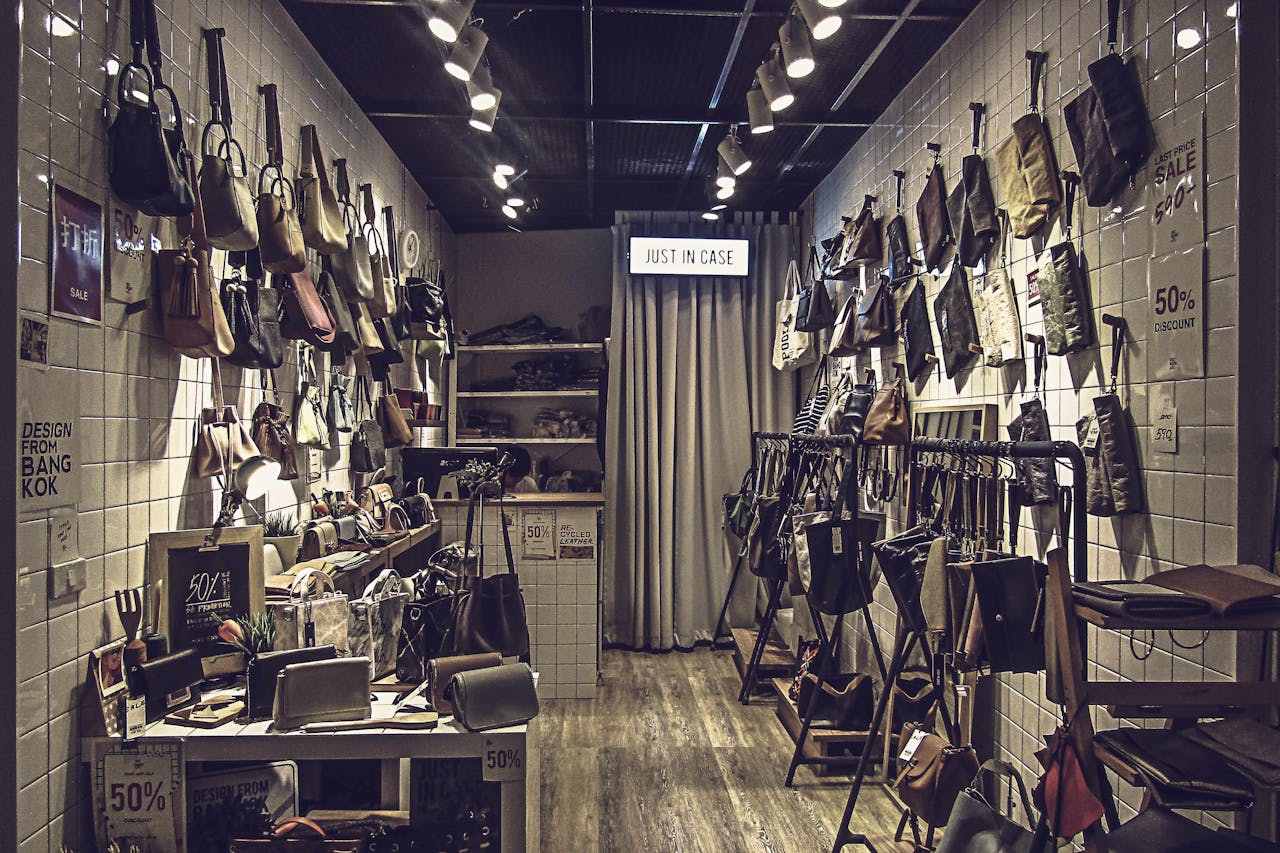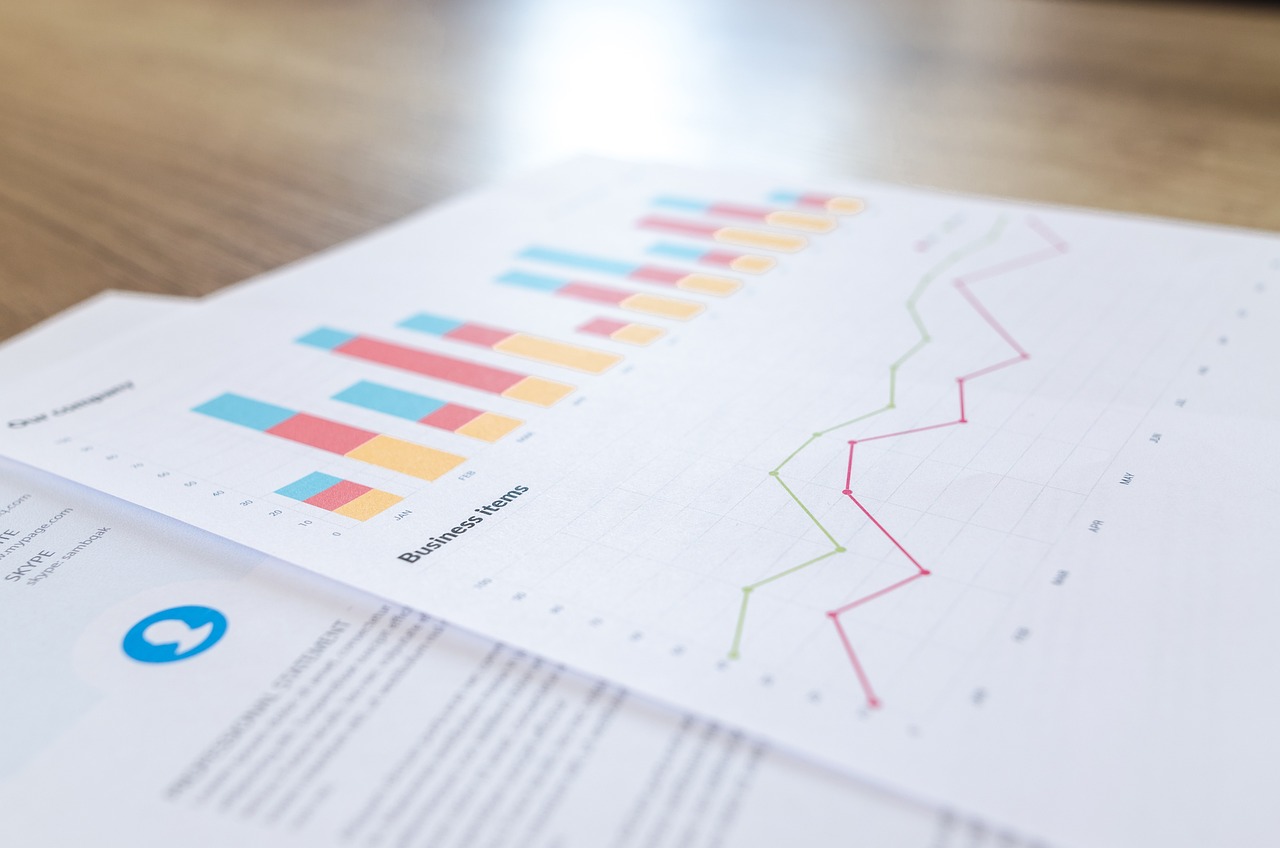

When looking at the retail industry, cash flow management refers (simply) to the money that is coming in and out of the business. For example, a lot of work is put into making a sale and when customers buy from a business they are effectively putting money into it, where the business then pays its expenses such as wages, supplies, materials, etc.
When a business has a positive cash flow, it has more sales and income coming in than the expenses incurred to keep operational. Simple right?
Well, cash flow management is about monitoring, studying and tweaking cash receipts and expenses to accurately account for all monies incoming and paid out.
While many still confuse cash flow and profit, we’re here to tell you that the two aren’t the same. Profit is more of an accounting principle – what remains after deducting all expenses from income generated. We could go on to describe how to calculate net profit but let’s take a closer look at cash flow management, specifically for the retail industry – today’s topic!
Time and time again, poor cash flow management is the leading reason that many retail businesses fail. Whether this is because finding actual cash flow is an issue or if it’s because the business is unable to pay its staff or vendors because of poor cash flow, there are a number of issues that can arise from poor cash flow management.
By understanding what cash flow management is and how to use it effectively in business, retail companies will be better able to succeed in controlling and predicting their finances
In this post, I’ll be covering:
- Effective cash flow management can help retail businesses overcome many kinds of issues
- Retail businesses can use their understanding of cash flow management to improve it and free up additional funds
- Using a dedicated platform for cash flow management and prediction can help retailers stay afloat
- Final thoughts
We, here at Brixx, have pitted ourselves against some of the industry’s leading cash flow management, financial modelling and scenario planning tools.
“The key to managing cash flow for retailers is really related to two things — how quickly they turn their stock and how much gross profit they are making on each sale,” explains Catherine Erdly, founder of Future Retail Consulting.
Effective cash flow management can help retail businesses overcome many kinds of issues
Having sound cash flow can help retailers protect themselves against sales shortfalls, reduce owner and staff stress and help identify key areas and times for growth, among others.
1. Protect against sales shortfalls
Retail cash management is particularly challenging. It costs a lot to source retail inventory, pay good staff and keep operations running – whether the store is online or offline.
Retailers, such as clothing stores for example, often need to plan for seasonal inventory and would waste money if they stocked too many swimsuits for a store located in a mostly rainy climate. But sometimes, even the best laid plans fail.
What if the store was located in a sunny climate but had an unexpected weather pattern of rain and storms? That kind of unexpected event could cause the retailer to go out of business if it doesn’t have a solid cash flow projection.
2. Reduce owner and staff stress
By getting a handle on current and projected cash flow, retailers are able to accurately plan for expenses such as making payments to staff, vendors, etc. By knowing who the business can pay and when, makes it easier for the owner and staff to focus more on the business instead of worrying about their finances.
3. Key indicators for growth
Without a solid grasp on cash flow, it’s impossible for a business to understand how and when it can grow. It is crucial to look at opportunities for growth with a clear head. Growing a retail business can come with a host of expenses around inventory, distribution, product development and marketing. Knowing exactly what cash is on hand and what may be coming into the business in the future can help make decisions about business growth or reduction, a much simpler and clear cut process.
4. Gain leverage
Good cash flow management gives a business leverage. If the business needs a line of credit from the bank to get through a shortfall, for example, a good cash flow management system will be able to back up the figures and establish trust.
Banks generally like to see this kind of planning, especially if you can clearly show when you’ll be able to repay the funds and suppliers are more flexible when they know exactly when and how they’ll be paid. They will be more willing to assist your business if trust can be established in terms of the business’ finances.
5. More accurate
Cash flow is significantly more accurate than a budget as it can tell you what is actually happening with the business rather than providing a wishful thinking version of the truth.
Retail businesses can use their understanding of cash flow management to improve it and free up additional funds
By understanding what cash flow management is, the difference between cash flow and profit and how effective cash flow management can help prevent an array of issues, retailers can use this to improve on their efforts and free up additional money. We’ve run through a few examples below.
1. Having smarter inventory practices
Many retailers have their cash tied up in inventory. By ensuring the business is stocking the right products and selling them at a healthy profit, cash flow can be improved with little effort. And any excess stock can be liquidated to free up additional cash. For example:
- Spread out your purchases
- Improve the value of your inventory
- Liquidate excess inventory
- Put them on sale
- Bundle them with other products
- Sell them to liquidation companies
- Sell them on online marketplaces
- Offer them as free gifts
2. Review your insurance policies
Martin recommends that business owners review their insurance policies every six to twelve months. By talking to a broker who represents many different providers (rather than on) you can find out what company would be best to offer you different policies you purchase. Also, if you find a lower quote elsewhere, for example, then talk to your current insurance company to see if they’re willing to match it, effectively lowering your costs.
3. Stay on top of invoices
Not collecting what’s due can keep much needed cash tied up, so if you have customers paying in installments, see to it that you’re on top of their accounts.
- Keep shopper records up to date
- Monitor outstanding invoices
- Send in reminders when necessary
Managing on account sales becomes immensely easier if you integrate your Point of Sale system with your accounting software. Whenever a customer pays in installments, they use their system to generate an invoice, then send it over to an accounting software like Xero, which creates an account. The data syncs between the two systems makes it easy to manage and reconcile each account. Brixx, for example, integrates seamlessly with Xero for effective cash flow management and projection.
4. Lower merchant card services fees
Another quick cash flow boost could be done by taking a second look at your merchant card service fees. Get estimates for coverage at least once a year to make sure you aren’t paying more than you need to, not only in interest rates but in fees. Try to negotiate with credit card processors. If you process a lot of card transactions, for instance, see if you can use that to get better rates. If that doesn’t work, try to shop around for processors that can offer more favorable terms.
6. Perform a Common Area Maintenance audit
Common Area Maintenance (CAM) fees—which cover landlord-incurred operating expenses such as exterior cleaning, parking lot maintenance, etc.—are determined by the property owner and are charged (typically) at a cost per square foot basis. As more businesses become strapped for cash, an increasing number of merchants are deciding to audit and reconcile CAM charges to be sure they are not being hoodwinked by landlords.
If your lease agreement gives you the right to perform CAM audits, then consider doing them. If you do find errors and overcharges, you could potentially recover significant amounts and eliminate future charges.
7. Keep a reserve
Always have a backup plan for when your business is strapped for cash. A good rule of thumb is to leave yourself at least 2 months’ worth of expenses to work with, in the event of a slow month or a sudden financial burden. Without this cash reserve, these things could spell disaster for your business.
Using a dedicated platform for cash flow management and prediction can help retailers stay afloat
Dedicated tools, like Brixx, can help retail businesses not only monitor their current financial position but can aid them in knowing how today’s decisions will impact tomorrow’s bank balance.
The Brixx platform helps businesses plan and manage cash flow with ease, without needing to be an expert. With Brixx businesses can:
- Plan all income, expenditure, assets and funding
- A visual picture of all your financial activities
- Full cash flow dashboard as well as detailed reports
- Forecast monthly up to 10 years into the future
Dedicated tools like Brixx can help retailers know where to invest their money when
looking to grow their businesses by providing a strategic view of their finances to help:
- Plan when to hire new staff
- Know when to purchase new equipment
- Time the launch of new marketing campaigns
- Plan your inventory purchases
Additionally, platforms like Brixx can help businesses model “what if” scenarios with ease to explore future possibilities and their effects on cash flow, answering questions like:
- What if my suppliers change their costs?
- What if my product launch is delayed?
- What if my deliveries are late?
By making use of a dedicated tool or platform, retail businesses are able to execute long term strategic planning. The Brixx cash flow forecasting software isn’t just a short term cash flow projection to help you survive the next few weeks. You can plan up to 10 years into the future allowing you to explore how you’ll achieve your vision and goals for your business.
Final thoughts
Cash flow management is key to a retail business’ survival and with a dedicated tool like Brixx, you are more likely to succeed in the long term. If you haven’t already, be sure to take Brixx for a test drive with the Bike Shop Demo or sign up to explore how our tool can help with:
- Automatic tax payment forecasts
- Setting your payments terms
- Sharing with your advisors & investors
- 3 way forecasts
- Tracking actuals vs forecast
- Exporting cash flow













